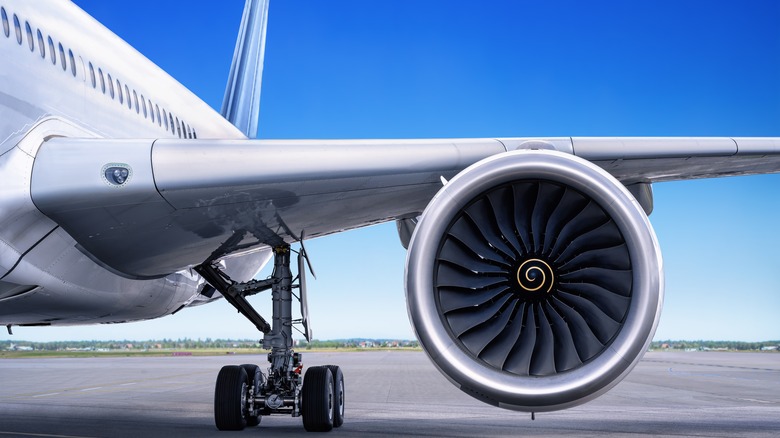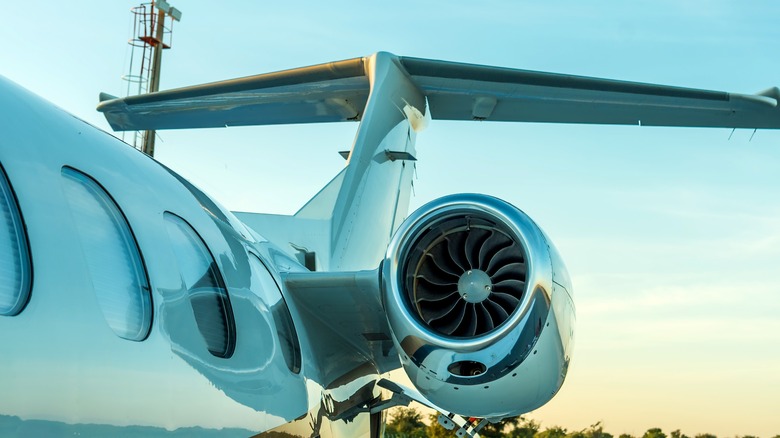Airplane Engine Placement: Why Some Are Located On The Wing And Others On The Tail
Passing time at the airport can include watching YouTube, texting a friend, or maybe even taking a nap. But if you've been bored enough, you may have looked at the planes outside the window and wondered why some have engines mounted under the wings, while others have them at the tail. The design difference isn't just for looks – it actually has a major impact on how the plane flies and operates. But what's involved in that design difference?
According to Mentour Pilot, an airline insider YouTube channel, mounting the engines below the wings means easier maintenance access. It also means larger engines can be used on the plane and more can be added as well. While some planes have four engines fitted at the tail, it's more common to see that many under the wings. Wing mounted engines also keep the wings heavier and decrease any bending that may occur during flight.
Engines mounted at the back of the plane means the cabin won't be as noisy. The plane can also reverse from the terminal without the assistance of a tractor, meaning you might be able to save a bit of time and possibly get in the air a little quicker. There's also less of a chance that rocks or other debris could be sucked up from the ground, which could potentially damage the engines.
Commercial and private planes often feature different engine placements
Engine placement on an airplane can vary, with some engines under the wing and some at the tail. Each one has its benefits, but which one is used in commercial flight versus private flight and why are those configurations still used today?
According to the Sydney Morning Herald in 2021, commercial airlines typically feature planes with engines under the wings. This wasn't always the case however, as in the 1950s and 1960s, planes needed to be lower to the ground due to an inability to easily access them for maintenance, or even boarding. Keeping the engines at the tail meant making life a lot easier for everyone involved. But as technology improved over the years, commercial airlines began moving the engines under the wings and that's now the norm. There are a few exceptions however, like the Boeing 717, which can be used for shorter flights.
Private planes on the other hand, often use the tail engine placement. This is due in part because private flights often don't access a traditional terminal and thus need to be closer to the ground, so passengers can exit the plane using an onboard staircase. There's also less of a chance of getting any debris from the ground into the engines on smaller, often rural, runways.

